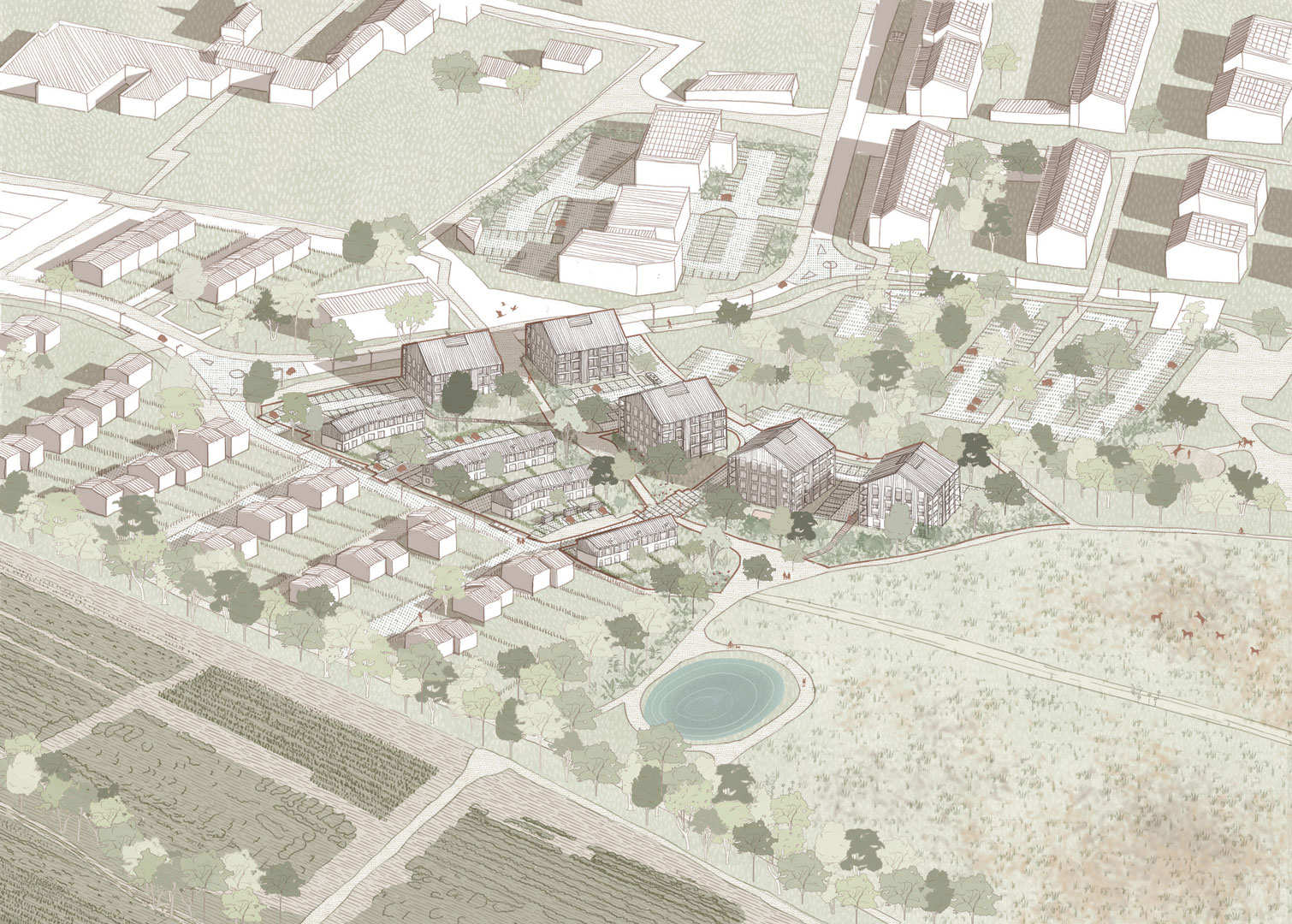
PASSIVE HOUSING
workshop-designed
In the heart of Nantes Métropole, on the southern edge of the ZAC de la Fleuriaye, in the town of Carquefou, ANMA and Ylé are building 90 passive housing units for Maison Familiale de Loire Atlantique and Legendre Immobilier.
The project is designed according to a methodology dear to the agency, that of collective intelligence, the result of collaborative work bringing together the expertise of the project management team, local players and the project owner, as well as that of our architects, urban planners and landscape architects.

resource buildings
for the environment
As opposed to a new, stand-alone urban room, this is a group of 5 buildings and 13 resource houses that take advantage of their rural, social and natural environment to create a local and collective life. They are the tools of a new ecological district, where a variety of new habitats, meeting spaces and an assertive landscaping project coexist.
It’s the landscape that makes up the project: its fine geographical design places it directly in the ecological identity of the site, at the crossroads of agricultural, natural and wetland environments. The project is spread over four plots crossed by a large public pedestrian walkway.
The vegetation continuity between these plots, the public space and existing natural environments is defined to the west by dense vegetation, consisting of hedgerows that connect to the existing natural network, encouraging native fauna and filtering overhead parking from homes and pathways. To the east, a more open vegetated character of herbaceous strata and fruit trees defines the individual gardens of the houses.
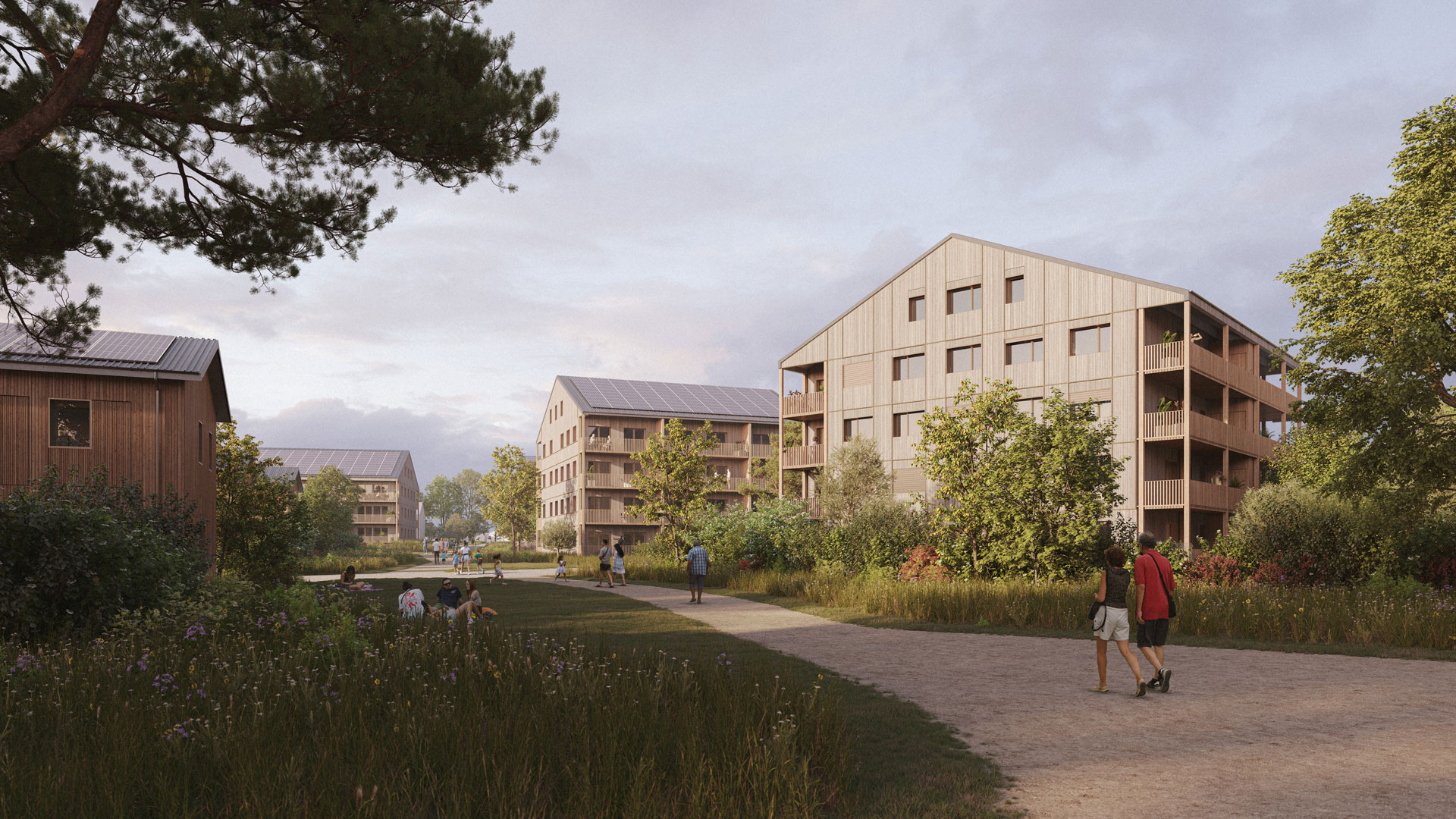
minimize artificialization
of living soil
The bucolic layout of the built surfaces contributes to the invitation to stroll that the project offers upon its discovery, pierced from side to side by alleys and crossings dedicated to soft modes of transport, whose surfaces are maximized by the existence of a single access ramp to an underground parking lot. The inventive master plan minimizes soil sealing and frees up a maximum of open-ground areas, the benefits of which are well proven – cool islands, calming first floors, respect for water paths, etc.
In keeping with a contemporary, heritage-based and enduring architectural approach, the project plays with morphological reinterpretations of the rural heritage of hamlets and farms. Grouped single-family dwellings take the form of long stretches with generous gardens, while small blocks of collective housing rise up like perches, offering magnificent views towards the groves and fields of the Erdre marshes.
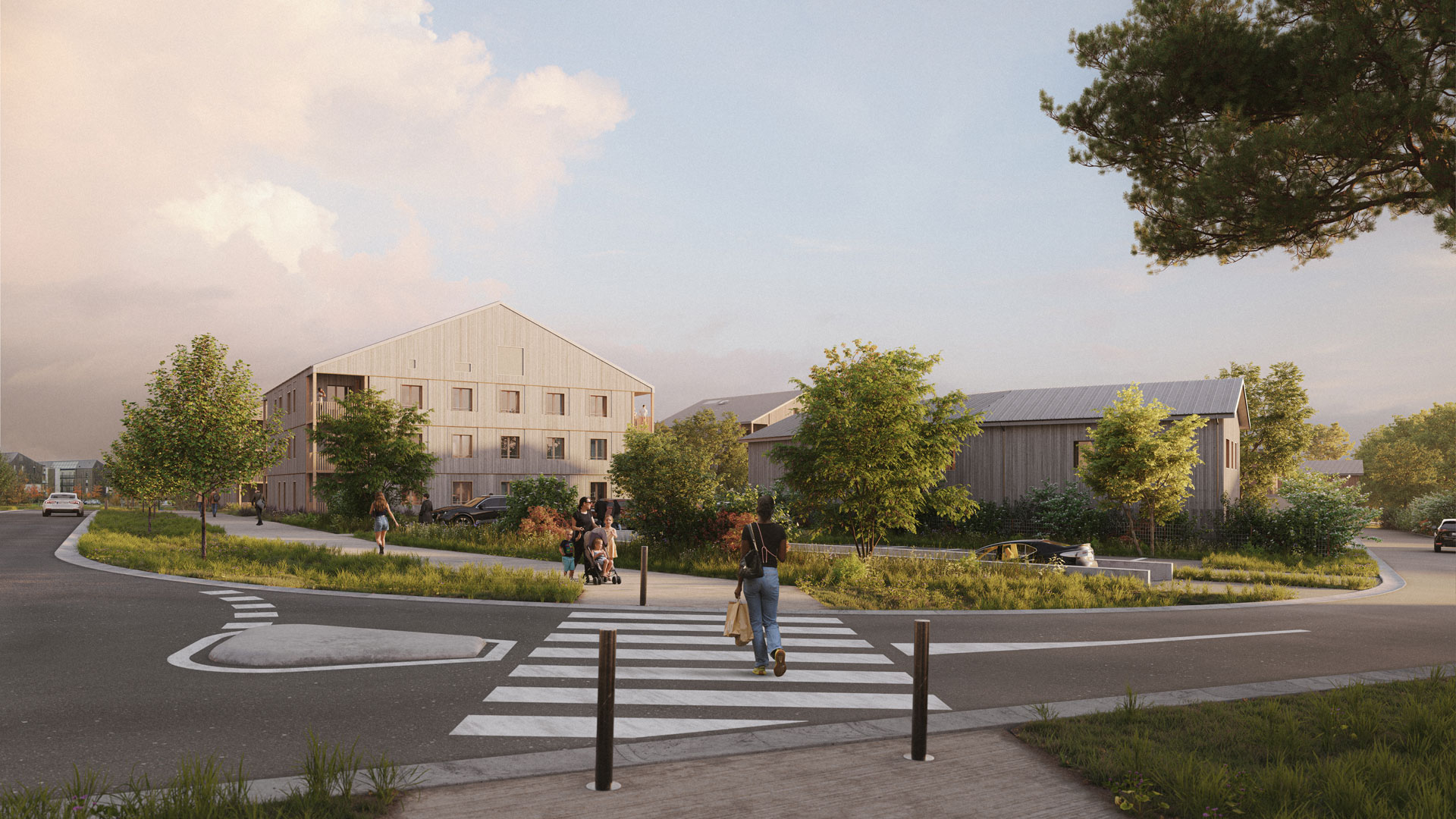
the vibrancy
of materials from yesteryear
Slate roofs or steel trusses, wooden walls and partitions, hemp-fibre insulation, pre-greased wood cladding: the noble, natural materials of the longères carry a message… that of the vibrancy of the materials of the hamlets, of the durability of the buildings of yesteryear, of the aesthetic harmony of natural tones, of the obviousness of simple buildings rooted in their territory.
These grouped single-family homes push the envelope in terms of high quality of use in the domestic environment. The homes feature double-height living rooms, with an attractive entrance sequence leading to a convivial central stove. They also feature lean-tos and storage for bicycles and wood.
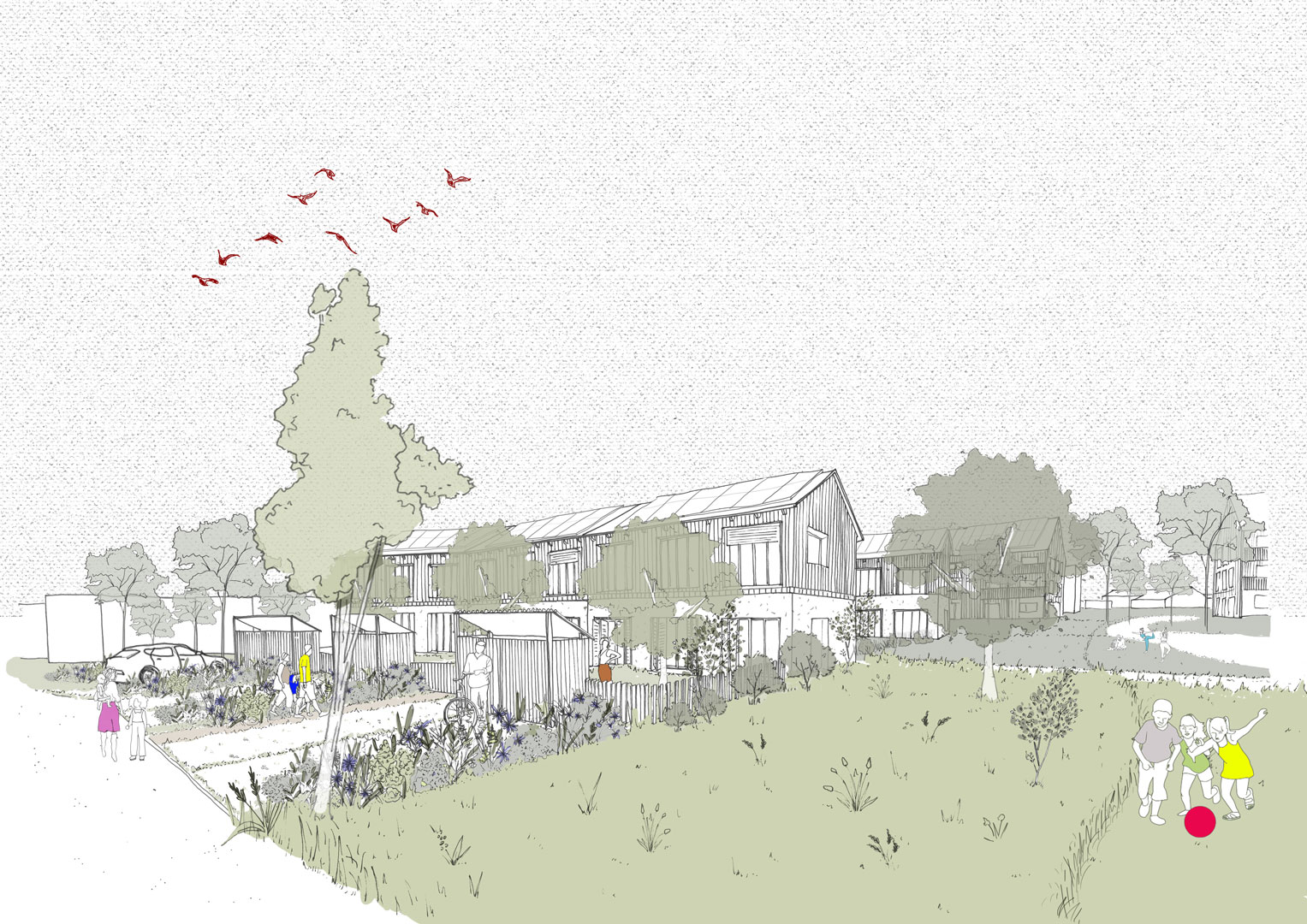
eco-friendly construction for a wide range of uses
The R+2 and R+3 collective perches similarly minimize their impact on the environment through the use of natural materials: lightweight wood-frame facades, retified wood cladding, whitewashed rendering, wood or aluminum frames…
They also combine the codes of domestic construction for the benefit of users: double-oriented, rational, flexible and refent-free homes, with generous heights, loggias, storerooms, kitchens bathed in natural light and angled living rooms to catch the best views.
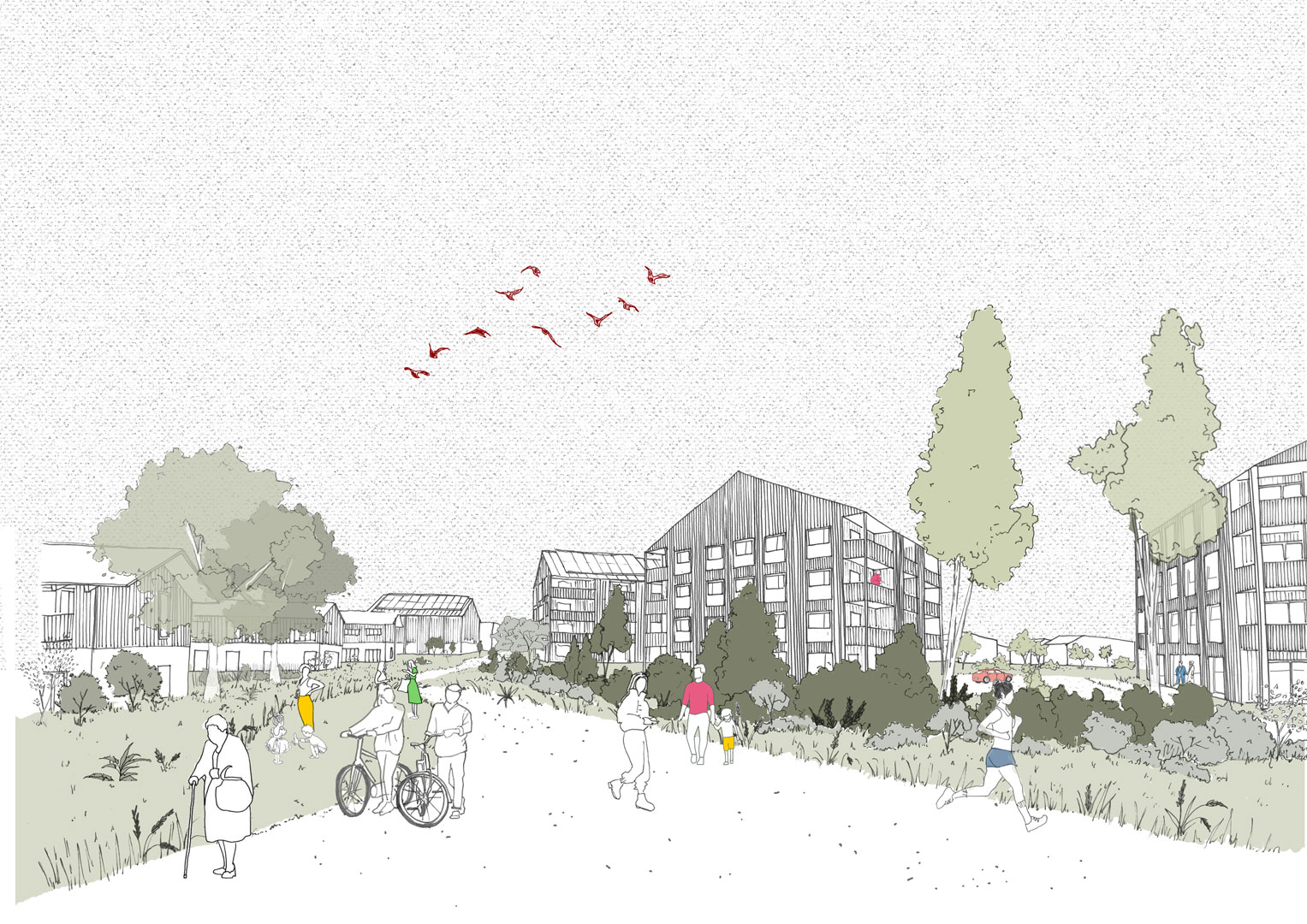
building a low-carbon passive project
To minimize the project’s environmental impact, nothing is left to chance, and the project’s compactness and materials, the solarization of facades, the management of outdoor parking, the design of a high-performance thermal envelope, the treatment of summer comfort, the performance of heat production and mechanical ventilation systems… are all studied.
To achieve the highest energy standards: Passiv Haus and Bâtiment certification, RE2020 requirements and a 100% renewable energy target.
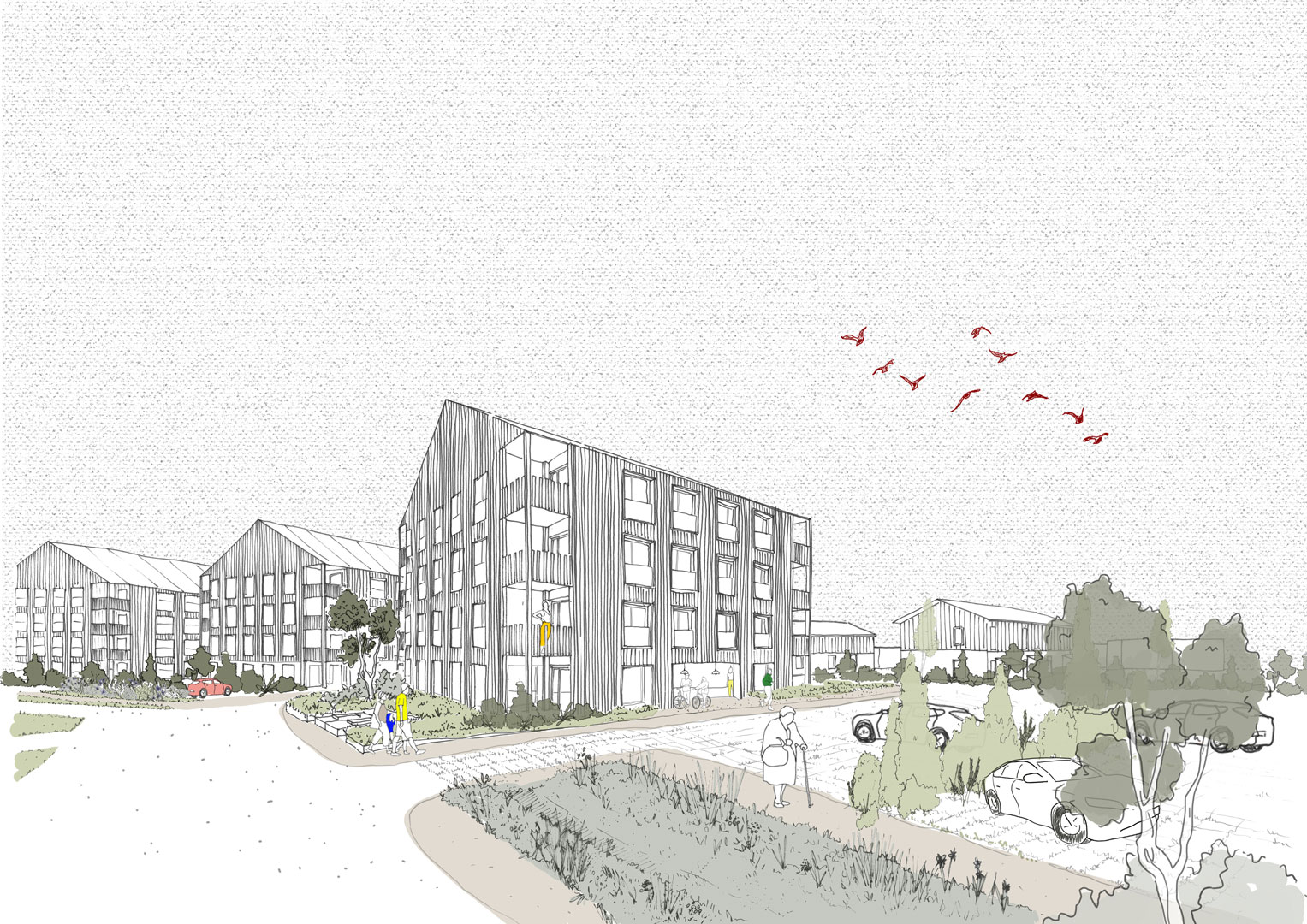
PROJECT TEAM
PROJECT MANAGEMENT
Coordinating architect, landscape designer: ANMA
Associate architect: Ylé
Environment, fluids, acoustics: Solab
Structure: Ouest Structure
Environment, thermal, Passivhaus, Re2020: Energelio
Timber constructor: Macoretz
Construction economics: Exe
VRD: Ageis
Centrale photovoltaïque: Legendre Energie
COMPETITION
Architecture: Juliette Moreau
Landscape: Chloé Coudraud
STUDIES
Architecture: Juliette Moreau, Fernanda Bernava
Landscape: Chloé Coudraud
Support: Lucas Rietsch, Zeineb Jaziri,
TECHNICAL SHEET
STATUS Invitation to tender underway
PROJECT MANAGEMENT Legendre Immobilier,
Maison Familiale de Loire Atlantique
DELIVERY 2025
SURFACE 6,800 m² SP
WORKS VALUE 13 M€ HT
ENVIRONMENT RE2020, Passivhaus, Ecrain, Biosourced building
PERSPECTIVIST Agence Palissade
CONSTRUCTION CARBON INDEX
Plot A: 744 kgCO2/m² for 807 maximum (RE2022)
Plot B: 587 kgCO2/m² for 720 maximum (RE2025)
Plot C: 569 kgCO2/m² for 720 maximum (RE2025)
Plot D: 548 kgCO2/m² for 720 maximum (RE2025)
Plot E: 566 kgCO2/m² for 720 maximum (RE2025)
SEE +
Bordeaux, Low-energy offices
Lieusaint, Passive housing
Senlis, Ecoquartier de l’ancienne gare
